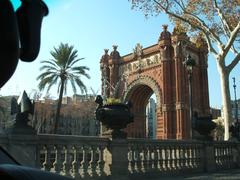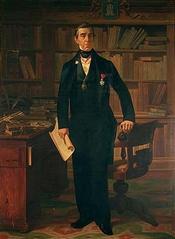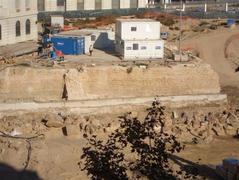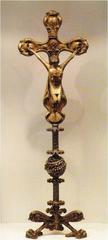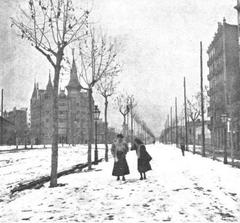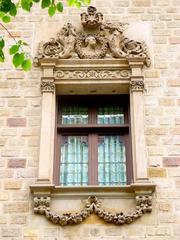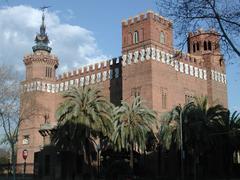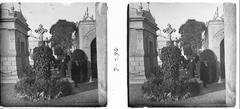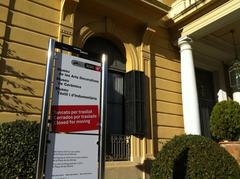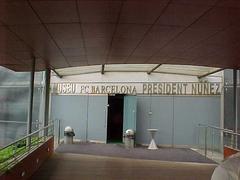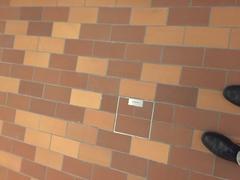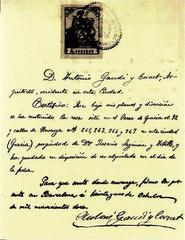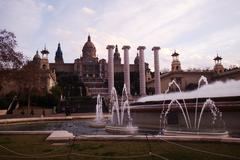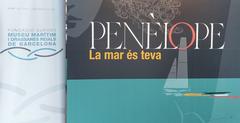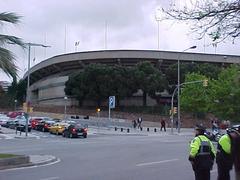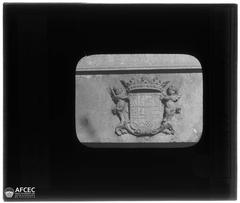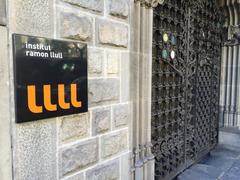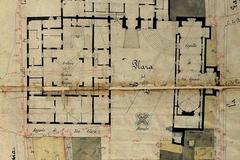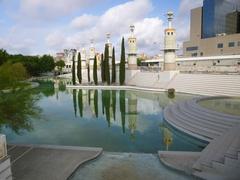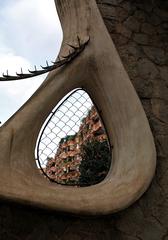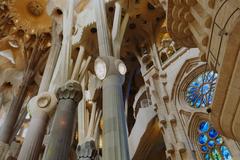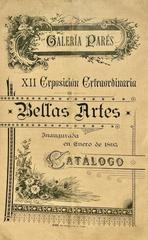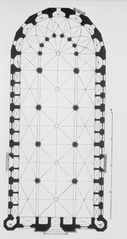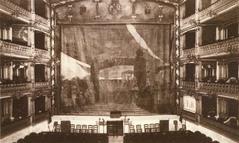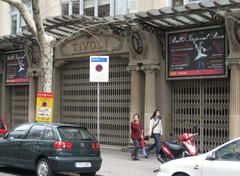A Guide to Visiting the Fossar de les Moreres: Barcelona’s Memorial to Resistance
Date: 24/07/2024
Introduction
Nestled in the vibrant Ribera district of Barcelona, the Fossar de les Moreres is a site steeped in rich history and profound cultural significance. Often overlooked by casual visitors, this memorial stands as a poignant symbol of Catalan resilience and national pride. Originally serving as a burial ground for the adjacent Santa Maria del Mar Basilica, Fossar de les Moreres gained its most significant historical relevance during the War of the Spanish Succession. On September 11, 1714, Barcelona fell to Bourbon troops after a brutal 13-month siege, and the defenders who perished were buried at this site. This event marked a turning point in Catalan history, leading to severe repression of Catalan institutions and culture (Meet Barcelona).
Beyond its historical roots, Fossar de les Moreres has evolved into a powerful symbol of Catalan identity. The site features a striking red oxide-colored steel memorial designed by Alfons Viaplana, topped by an eternal flame that burns day and night in honor of those who defended Barcelona (Wikipedia). This guide will delve into the historical significance, cultural importance, and practical details for visiting this must-see memorial in the heart of Barcelona.
Historical Significance and Evolution
Medieval Origins and Early Use
The Fossar de les Moreres, located in the heart of Barcelona’s Ribera district, has a history that dates back to medieval times. Originally, it served as a burial ground for the adjacent Santa Maria del Mar Basilica, also known as the Cathedral of the Sea. This cemetery was a resting place for the local populace, reflecting the common practice of situating graveyards near churches during that era.
The Siege of Barcelona and the War of the Spanish Succession
The most significant chapter in the history of Fossar de les Moreres unfolded during the War of the Spanish Succession. On September 11, 1714, after a grueling 13-month siege, Barcelona fell to the Bourbon troops led by Philip V. This event marked the end of Catalonia’s resistance and led to severe repression of Catalan institutions and culture (Meet Barcelona). The defenders who perished during the siege were buried in a mass grave at Fossar de les Moreres, transforming the site into a symbol of Catalan nationalism and resistance.
Symbolism and National Significance
The significance of Fossar de les Moreres extends beyond its role as a burial ground. It has become a powerful symbol of Catalan identity and resilience. The site is particularly poignant for Catalans, as it commemorates those who fought and died defending their homeland. The phrase inscribed on a marble plaque at the site, part of a text by Frederic Soler, reads: “In the graveyard of the mulberry trees no traitor shall be buried; even if our flags are lost, it will be the urn of honour” (Barcelona Lowdown).
Architectural and Memorial Developments
In 1989, the architect Carme Fiol undertook a significant project to reveal the historical burial site by demolishing the buildings that had been constructed over it. The ground was then paved with red bricks, symbolizing the blood shed during the siege (Barcelona Turisme). This transformation turned the area into a public plaza, making the historical significance of the site accessible to all. In 2001, a further enhancement was made with the installation of a red oxide-colored steel memorial designed by Alfons Viaplana. This memorial is topped by an eternal flame, which burns day and night in homage to the fallen defenders (Wikipedia). The eternal flame serves as a constant reminder of the sacrifices made and the enduring spirit of the Catalan people.
Annual Commemorations and Cultural Events
Fossar de les Moreres is not just a static memorial; it is a living part of Catalan culture and history. Every year on September 11, the National Day of Catalonia (Diada), the site becomes the focal point for political, social, and cultural events. These commemorations include readings of the poem “El Fossar de les Moreres” by Frederic Soler, which reinforces the site’s role as a symbol of national pride and remembrance (Meet Barcelona).
Broader Interpretations and Universal Significance
While Fossar de les Moreres holds specific national significance for Catalans, it also resonates on a broader, more universal level. The site can be seen as a tribute to all anonymous combatants who have fought and died in conflicts throughout history. In this sense, it is akin to the tombs of the unknown soldier found in many other countries, serving as a reminder of the countless individuals who have sacrificed their lives for their homeland (Meet Barcelona).
Visitor Information
Visiting Hours and Tickets
Fossar de les Moreres is a public plaza and can be visited at any time of the day or night. There is no entrance fee, making it accessible for all visitors.
Travel Tips
- Best Time to Visit: While you can visit the site year-round, visiting during the National Day of Catalonia on September 11 offers a unique cultural experience.
- Nearby Attractions: The site is close to other historical landmarks such as the Santa Maria del Mar Basilica, the Born Cultural Centre, and the Picasso Museum.
- Accessibility: The plaza is wheelchair accessible, making it convenient for all visitors.
- Photography: The site offers several excellent photographic spots, especially during the golden hours of sunrise and sunset.
Surrounding Historical and Cultural Context
The location of Fossar de les Moreres adds to its historical and cultural significance. It is situated in the Ribera neighborhood, an area rich in heritage and historical buildings. Nearby attractions include the Santa Maria del Mar Basilica, the Born Cultural Centre, and the Picasso Museum. The proximity to these sites makes Fossar de les Moreres an integral part of the historical tapestry of Barcelona (Barcelona Lowdown).
FAQ
Q: What are the visiting hours of Fossar de les Moreres? A: Fossar de les Moreres is open 24/7 as it is a public plaza.
Q: Is there an entrance fee to visit Fossar de les Moreres? A: No, there is no entrance fee.
Q: What is the best time to visit Fossar de les Moreres? A: While you can visit anytime, September 11, the National Day of Catalonia, offers a unique cultural experience.
Q: Are there any guided tours available? A: Information on guided tours can typically be found at nearby tourist information centers or online.
Conclusion
The Fossar de les Moreres stands as a poignant reminder of Barcelona’s turbulent history and the enduring spirit of its people. From its origins as a medieval burial ground to its transformation into a symbol of Catalan nationalism, the site encapsulates the resilience and pride of the Catalan people. The annual commemorations and the eternal flame ensure that the memory of those who fought and died during the 1714 siege continues to inspire future generations.
Call to Action
Interested in exploring more historical sites in Barcelona? Check out our other articles and download our app Audiala for personalized travel recommendations. Follow us on social media for updates on the latest events and attractions!
References
- Barcelona Lowdown. (n.d.). Fossar de les Moreres. Retrieved from https://barcelonalowdown.com/fossar-de-les-moreres/
- Meet Barcelona. (n.d.). Points of Interest in the City. Retrieved from https://www.meet.barcelona/en/visit-and-love-it/points-interest-city/fossar-de-les-moreres-99400386857
- El Nacional. (n.d.). The Unexpected Link to Lenin at a Unique Barcelona Monument: Fossar de les Moreres. Retrieved from https://www.elnacional.cat/en/culture/unexpected-link-lenin-unique-barcelona-monument-fossar-moreres_1153741_102.html
- Wikipedia. (n.d.). Fossar de les Moreres. Retrieved from https://en.wikipedia.org/wiki/Fossar_de_les_Moreres


